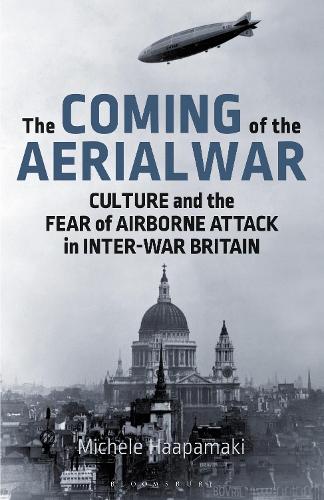
The Coming of the Aerial War: Culture and the Fear of Airborne Attack in Inter-War Britain
(Paperback)
Publishing Details
The Coming of the Aerial War: Culture and the Fear of Airborne Attack in Inter-War Britain
By (Author) Michele Haapamki
Bloomsbury Publishing PLC
Bloomsbury Academic
30th April 2020
United Kingdom
Classifications
Tertiary Education
Non Fiction
Literature: history and criticism
European history
Social and cultural history
Second World War
Modern warfare
Political control and freedoms
Terrorism, armed struggle
Air forces and warfare
Aerospace and aviation technology
940.54
Physical Properties
Paperback
272
Width 138mm, Height 214mm, Spine 16mm
340g
Description
In the first half of the 20th century the possibility of flight opened up entirely new avenues of thought and exploration. In the age of H.G. Wells and Biggles, the opening up of the air to balloons and planes- the Royal Flying Corps was founded in 1912 - appealed to concepts of courage and bravery which would be both encouraged and undermined by the experiences of World War I. The sky also held new terrors for everyday people who were now within reach of an airborne enemy- these fears included the possibilities of bombing, poison gas, surveillance and social contol. This duality of fear and enthusiasm drove the Air Raid Precaution movement, while vocal elements in the press and in parliament called for radical plans to cope with apocalyptic scenarios. Here, Michele Haapamaki charts the history of flight and of war in the air in the early twentieth century, addressing the key issues of interwar historiography such as patriotism, fear, masculinity and propaganda.
Author Bio
Michele Haapamaki was educated at the British Columbia and McMaster University in Hamilton, Canada. She holds a PhD in modern British history and writes on contemporary and historical aspects of war and society.
